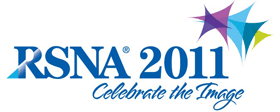
Abstract Archives of the RSNA, 2011
LL-MKS-TU6B
When Compared to Pre-contrast MR Images, Does Gadolinium-enhanced MRI in the Assessment of Musculoskeletal Infections Change Diagnosis or Reader Confidence?
Scientific Informal (Poster) Presentations
Presented on November 29, 2011
Presented as part of LL-MKS-TU: Musculoskeletal Imaging
P. Diana Afonso MD, Presenter: Nothing to Disclose
Charles Edward Spritzer MD, Abstract Co-Author: Nothing to Disclose
1.Evaluate if gadolinium enhanced MR (GeMR) change the final diagnosis in the MR assessment of osteomyelitis (OM), soft-tissue infection (STI) or septic arthritis (SA);
2.Determine which tissues GeMR has the greatest impact in arriving at the final diagnosis;
3. Assess if GeMR improve the confidence of the interpreting radiologist.
This is an IRB approved retrospective review of 213 studies (182 patients, 126M, 56F; mean age 50y) with the clinical indication of MSK infection. All were imaged with T1WSE, T2WFSE or STIR and post contrast non-fat sat T1WSE.
Initially the noncontrasted images were reviewed by 2 radiologists, one with 25 years of experience (reader1) and one undergoing MSK specialty training (reader2). Three questions were answered: 1.OM? (5 point scale:0 normal, 5 definitely OM); 2. STI? (cellulitis/myositis, phlegmon, abscess, sinus tract) 3. SA? (yes, no). Subsequently, both post-contrast and precontrast images were reviewed. The same questions were answered again and 4 others were answered including if: GeMR defined abscess vs phlegmon better, better defined extent, improved conspicuity, improved confidence (definitely more, slightly more, same, slightly less), and changed the final diagnosis. A change in diagnosis was defined as a change in any grading scale (e.g. phegmon to abscess). Histologic dx was available in 96 cases.
GeMR did not change diagnosis of acute OM. For reader 1 (reader 2) GeMR defined abscess vs phlegmon better in 92 (93) cases and increased conspicuity in 97(38) cases. GeMR significantly improved confidence in 46(18) and slightly improved confidence in 73(110) cases. The final diagnosis was changed in 51 (54) cases. With the exception of chronic OM, changes in diagnosis were all in the soft tissues. Experience did not significantly change GeMR utility.
In this study, GeMR changed the diagnosis in 23.9% for the more experienced reader and 25.4% for the less experienced reader. Equally important, reader confidence was improved significantly in 21.6% (8.5%) and slightly in 34.3% (51.6%) for reader1 and reader 2.
Where possible, GeMR should be used in the assessment of MSK soft tissue infections and chronic OM.
GeMR often improves reader confidence in MSK infections and in approximately 25% of cases it better defines the soft tissue abnormality. Gadolinium enhanced sequences should be utilized when possible.
Afonso, P,
Spritzer, C,
When Compared to Pre-contrast MR Images, Does Gadolinium-enhanced MRI in the Assessment of Musculoskeletal Infections Change Diagnosis or Reader Confidence?. Radiological Society of North America 2011 Scientific Assembly and Annual Meeting, November 26 - December 2, 2011 ,Chicago IL.
http://archive.rsna.org/2011/11034427.html

